Mule deer migrate over large, rugged regions of the American West. How do scientists figure out where they’re going?
The first step is to monitor their movements through satellite tracking.
Last week, on a classic Wyoming spring day (which means blustery and cold), I had the incredible opportunity to learn more about this process by helping with a mule deer capture near Big Piney, Wyoming.
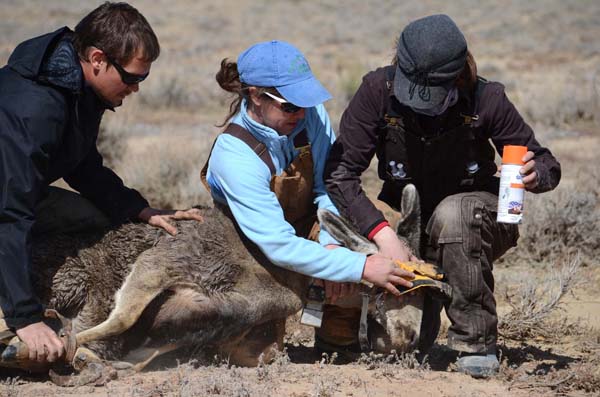
The event was to assist wildlife biologists from the Wyoming Cooperative Fish and Wildlife Research Unit at the University of Wyoming to capture and take vital stats on deer with GPS collars for a study in the Wyoming Range.
Led by Dr. Kevin Monteith, the team from the Coop Unit is studying these 35 mule deer, and an additional 35 at a more southerly winter range, to better understand how environmental conditions and disturbances, such as energy development, influence their movement patterns and how it affects population performance.
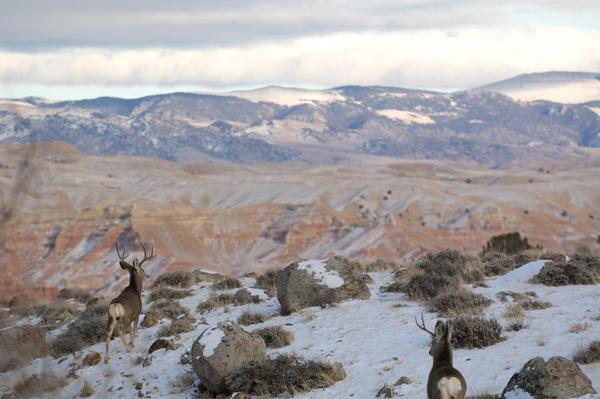
This study is being conducted in the remote sagebrush foothills of the Wyoming Range, an area dotted with small ranching communities, and with a long history of oil and gas operations.
I was invited to this event because The Nature Conservancy, through generous support from the NRCS Sage Grouse Initiative, Knobloch Family Foundation, Anne Ray Charitable Trust, and the Mule Deer Foundation, has partnered with this team on a different study examining how actions taken to conserve sage-grouse might benefit mule deer migrations using data from GPS collared deer just north of Big Piney near Pinedale, Wyoming.
So, what happens on a mule deer capture?
While about 25 or so of us waited at a site set up to receive the deer, the deer were individually netted by a small team of “muggers.”
Working from a moving helicopter, the muggers located each animal with telemetry equipment and then netted and airlifted them to our site. This incredible team from New Zealand (though now based in Salt Lake), flies all over the West working on biological studies, such as this one, capturing animals.
Once the animals were on the ground, teams of four worked together to measure, weigh, and take blood samples from each deer.
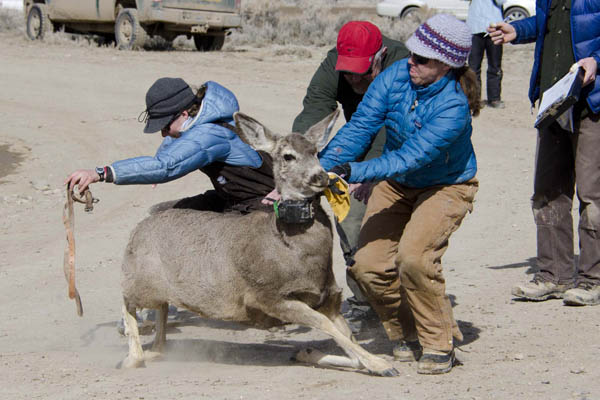
Dr. Monteith then used ultrasound equipment to determine their body fat and number and size of the babies that mama was carrying—most had twins.
As a mom of twins myself, I felt a twinge of camaraderie with each mama when Kevin confirmed her babies’ presence.
It’s hard to describe the feeling of holding and working with a wild animal. Each was so alive. Still spring, and not yet molted, their fur was coarse, and each had bulging bellies and not much remaining body fat, as most had been used up to get through the winter.
Most seemed quite healthy. A few, it seemed, had had a hard winter and it wasn’t clear if they or their babies would make it to summer.
Prior to being there, I wondered if the deer would be tranquilized during this process. The answer is that no, they are not sedated because it is easier for deer to recover without drugs.
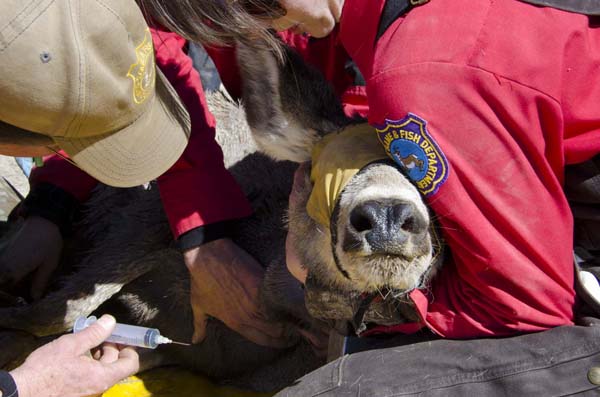
Some deer were definitely calmer than others, which made for some exciting moments trying to hold them while we worked. The entire process took only about 15 minutes, at which point we released them back into the wild.
GPS collar data has incredible power to guide conservation. Through collaring, this same team recently discovered a previously unknown deer migration that at 150 miles appears to be the longest known route of any ungulate in the lower 48 states.
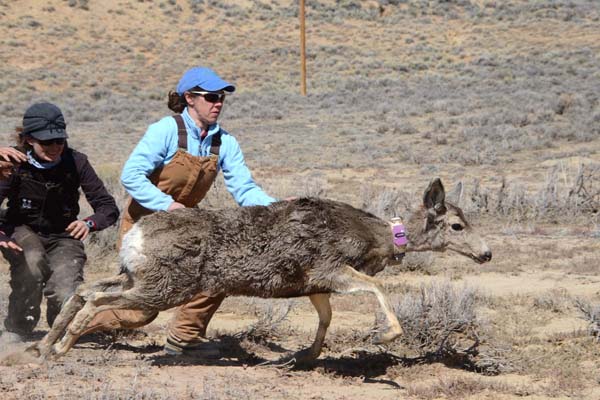
Through our network of partnerships, The Nature Conservancy will be working to figure out how to ensure conservation of this and other routes in Wyoming.
Herein lies the power of data.
Sometimes it seems that we are surrounded by so much data it is hard to imagine how we could possibly need more.
Don’t we know all this already and just need to take action? Sometimes.
But the truth is that real hard data on species, such as their actual migration routes, is much less available than we would like, as evidenced by the fact that this team just discovered the new longest migration route.
Are there routes out there still waiting to be discovered? I’m betting that the answer is “yes” and what we really need is more biologists looking.
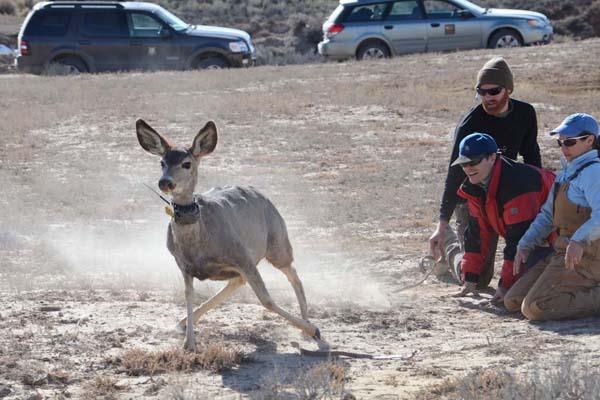




what is the longest migration route you mentioned
I think this is fantastic. It’s a wonderful write-up and what an experience not only capturing but tagging and monitoring these animals to obtain the information you need. I love the term, “muggers” and I loved the “twinge of camaraderie” that Holly Copeland felt with the mule deer mama’s that had twins…